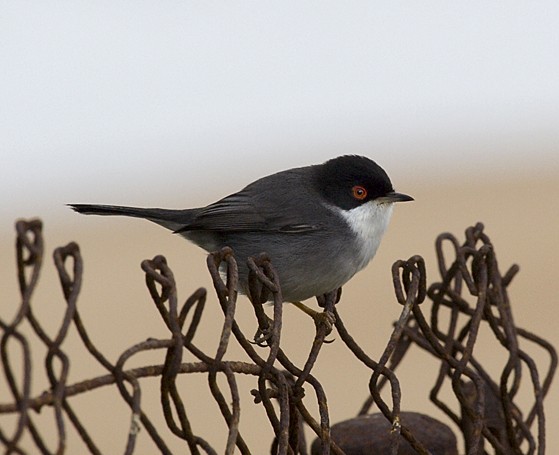Sardinian Warbler
A species of Typical Old World Warblers Scientific name : Curruca melanocephala Genus : Typical Old World Warblers
Sardinian Warbler, A species of Typical Old World Warblers
Botanical name: Curruca melanocephala
Genus: Typical Old World Warblers
Content
Description People often ask General Info
Description
The Sardinian warbler (Curruca melanocephala) is a common and widespread typical warbler from the Mediterranean region. Like most Curruca species, it has distinct male and female plumages. The adult male has a grey back, whitish underparts, black head, white throat and red eyes. Plumages are somewhat variable even in the same locality, with the intensity of a reddish hue on upper- and/or underside varies from absent to (in some subspecies) pronounced. The female is mainly brown above and buff below, with a grey head. The Sardinian warbler's song is fast and rattling, and is very characteristic of the Mediterranean areas where this bird breeds. 
Size
13 cm
Colors
Black
Gray
White
Life Expectancy
1-5 years
Nest Placement
Shrub
Feeding Habits
Sardinian Warbler predominantly feeds on insects and fruit. It forages actively in shrubs, displaying agility. Adaptations include a fine-tipped beak suited for gleaning prey from foliage. Prefers feeding in dense vegetation, with a diet varying seasonally.
Habitat
It breeds in the southernmost areas of Europe and just into Asia in Turkey and the eastern end of the Mediterranean. This small passerine bird, unlike most "warblers", is not particularly migratory, but some birds winter in north Africa, and it occurs as a vagrant well away from the breeding range, as far as Great Britain. 
Dite type
Insectivorous
People often ask
General Info
Feeding Habits
Bird food type
Sounds
Call
Recording location: Portugal
Song
Recording location: Portugal
Song
Recording location: Portugal
Behavior
This is a bird of open country and cultivation, with bushes for nesting. The nest is built in low shrub or brambles, and 3-6 eggs are laid. Like most "warblers", it is insectivorous, but will also take berries and other soft fruit. 
Distribution Area
It breeds in the southernmost areas of Europe and just into Asia in Turkey and the eastern end of the Mediterranean. This small passerine bird, unlike most "warblers", is not particularly migratory, but some birds winter in north Africa, and it occurs as a vagrant well away from the breeding range, as far as Great Britain. 
Species Status
Not globally threatened.
